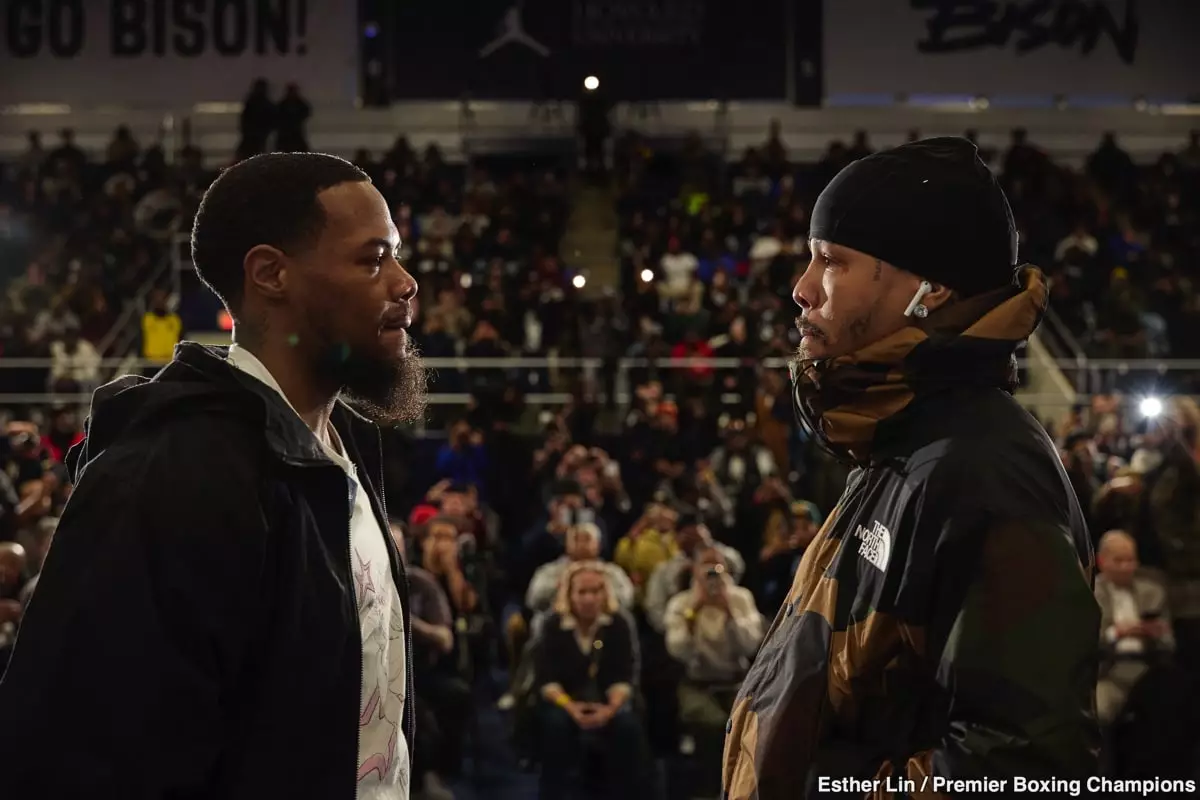As the fight between Lamont Roach Jr. and Gervonta Davis approaches on March 1st, boxing analysts and fans alike are brimming with anticipation. Despite widely-held expectations portraying this matchup as heavily one-sided in favor of Davis—a record champion with a fearsome reputation—prominent figures in the boxing community, including Oscar De La Hoya, are urging observers not to dismiss Roach outright. The narrative framing this encounter often reduces it to a mere formality for Davis, yet boxing history has repeatedly shown that the underdog can rise from the shadows to surprise audiences.
Oscar De La Hoya, serving as a commentator rather than a promoter in this instance, acknowledges the raw talent that Roach possesses. He articulates a compelling argument that Roach’s skill set may provide him with a unique advantage. De La Hoya refers to Roach as “sneaky good,” suggesting that his ability to execute unseen combinations may present unexpected challenges for Davis. This insider perspective thrusts Roach into the spotlight, challenging the boxing community to reconsider their preconceived notions based solely on statistics such as his KO percentage and the pedigree of his past opponents. Indeed, it is this very unpredictability that characterizes professional boxing, where outcomes often hinge on the unseen elements that accompany each fighter.
The uphill battle Roach faces is not just about technical prowess but also involves managing the emotional landscape of fighting a powerhouse like Davis. De La Hoya’s urging for Roach to “have fun” may ring hollow for some, given the oppressive weight of expectation and the sheer ferocity that Davis brings to each bout. However, it is this psychological aspect that can significantly influence the dynamics of a fight, particularly when an underdog faces a titan of the sport. Fighting “nervous and scared,” as De La Hoya suggests, could preemptively thwart any advantage Roach might have, boiling down the psychological tactics to counterpart the raw physical capabilities of Davis.
Roach’s approach should focus on adopting unconventional tactics as he gears up for the match. The pugilistic landscape is marked by its eclectic blend of fighting styles, and boxing prowess often depends heavily on strategic adaptability. De La Hoya lays emphasis on the potential for Roach to utilize his skills in a way that forces Davis to recalibrate his game plan. This could involve varying his punching power and throwing combinations strategically to keep Davis guessing. Roach’s ability to “punch outside the box” during the fight may be central to his potential success.
In contrast, Davis, known for his explosive punches that can incapacitate any opponent, presents a formidable wall for Roach to breach. The power disparity is palpable, as reflected in their knockout ratios. However, boxing is as much about rhythm and timing as it is about strength. If Roach can land that elusive punch that Davis doesn’t see coming, he might rewrite the narrative of this bout.
If Roach’s name were to be etched in the annals of boxing history following a victory, it would illustrate how unexpectedly fierce an underdog can be. De La Hoya evokes the legendary upset of Buster Douglas’s defeat of Mike Tyson—a moment that forever changed the landscape of heavyweight boxing. Such historical comparisons serve as a double-edged sword: while they inspire hope in the hearts of the underdog’s supporters, they amplify the stakes for the fighter stepping into the ring.
Roach’s journey in this match carries an array of implications far beyond personal glory; facing a monster like Davis could represent a new chapter in his career, fueled by an ambition that transcends mere statistics and resonates with the unpredictability inherent in boxing.
While the odds seem stacked against Lamont Roach Jr., the beauty of boxing lies in its unpredictability. This fight embodies the essence of the sport: a test not solely of brute strength or technical skill but of psychological fortitude, strategic innovation, and the possibility of surprising those who believe they hold the upper hand. As fans, analysts, and the fighters themselves eagerly await the showdown, the boxing world is reminded that anything is possible inside the ring, making March 1st a date to mark for potentially monumental historical significance.

